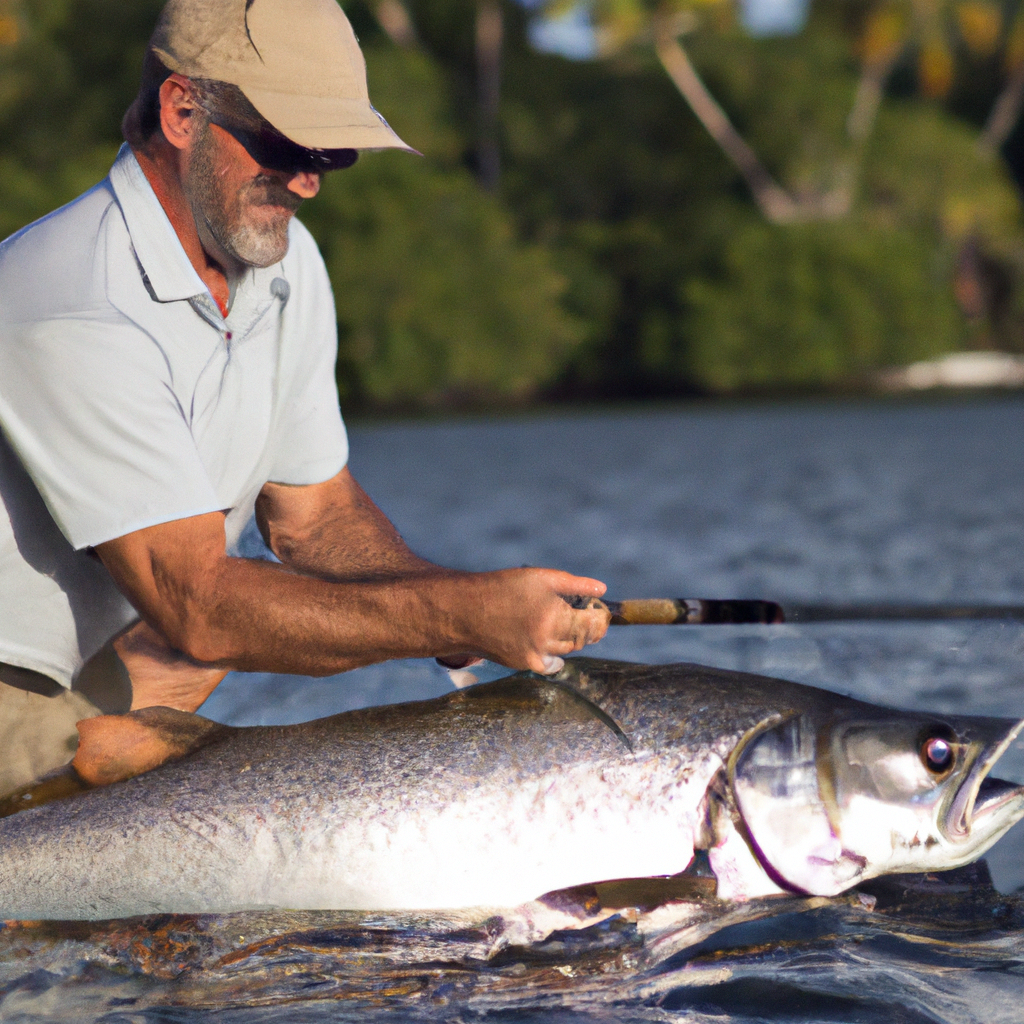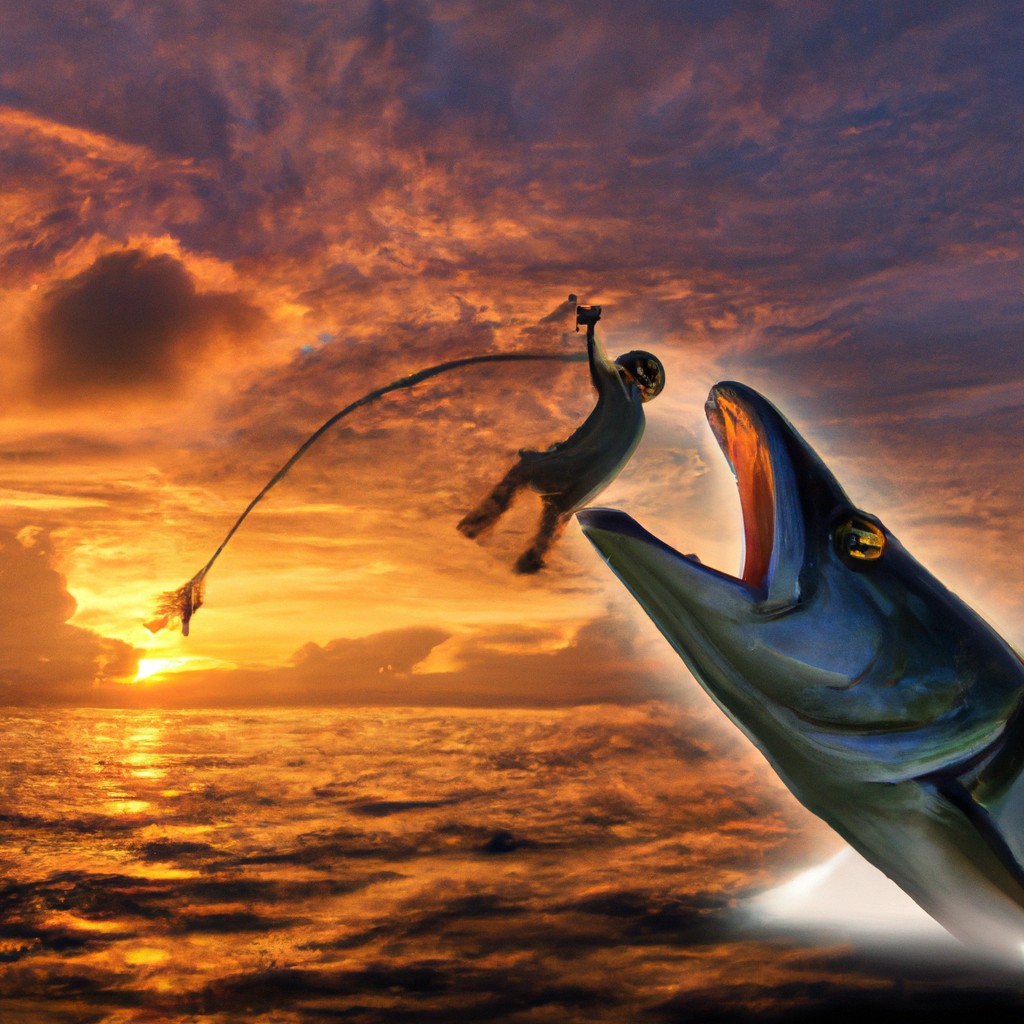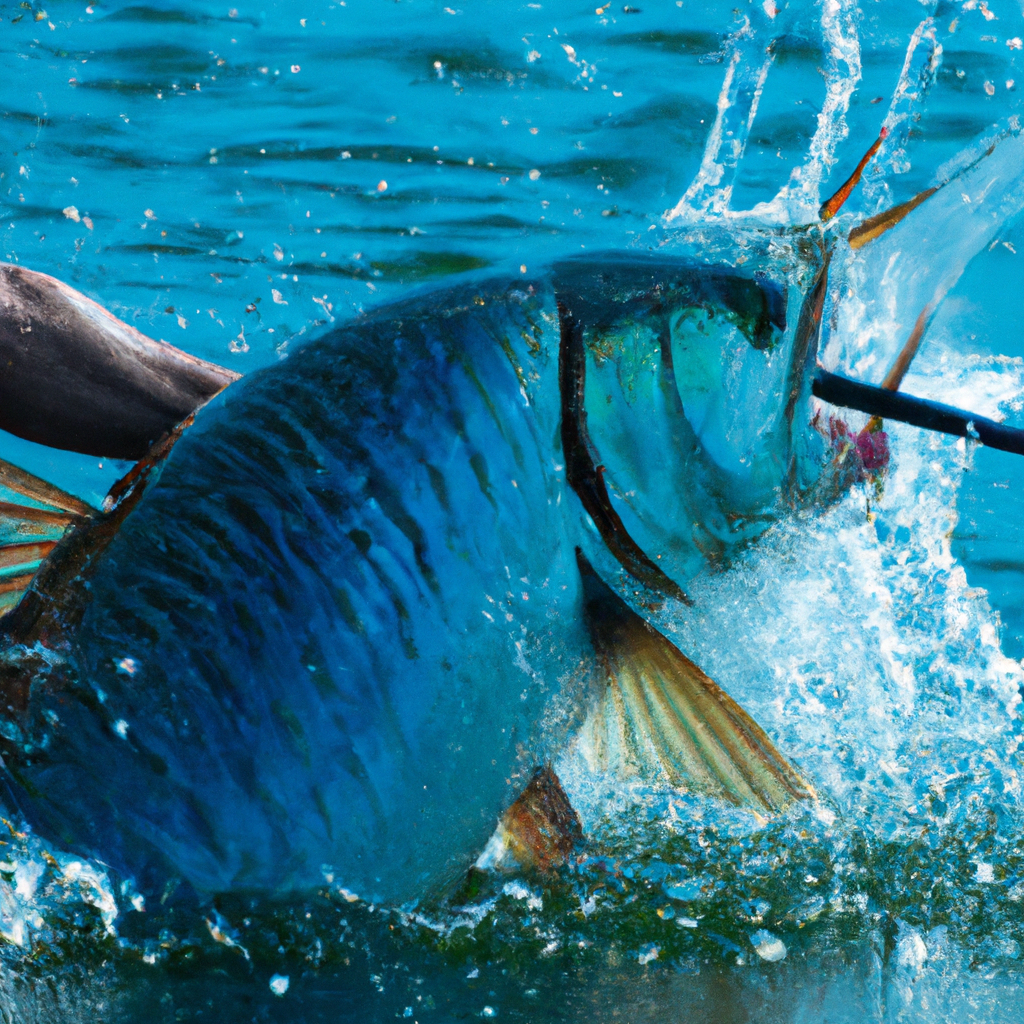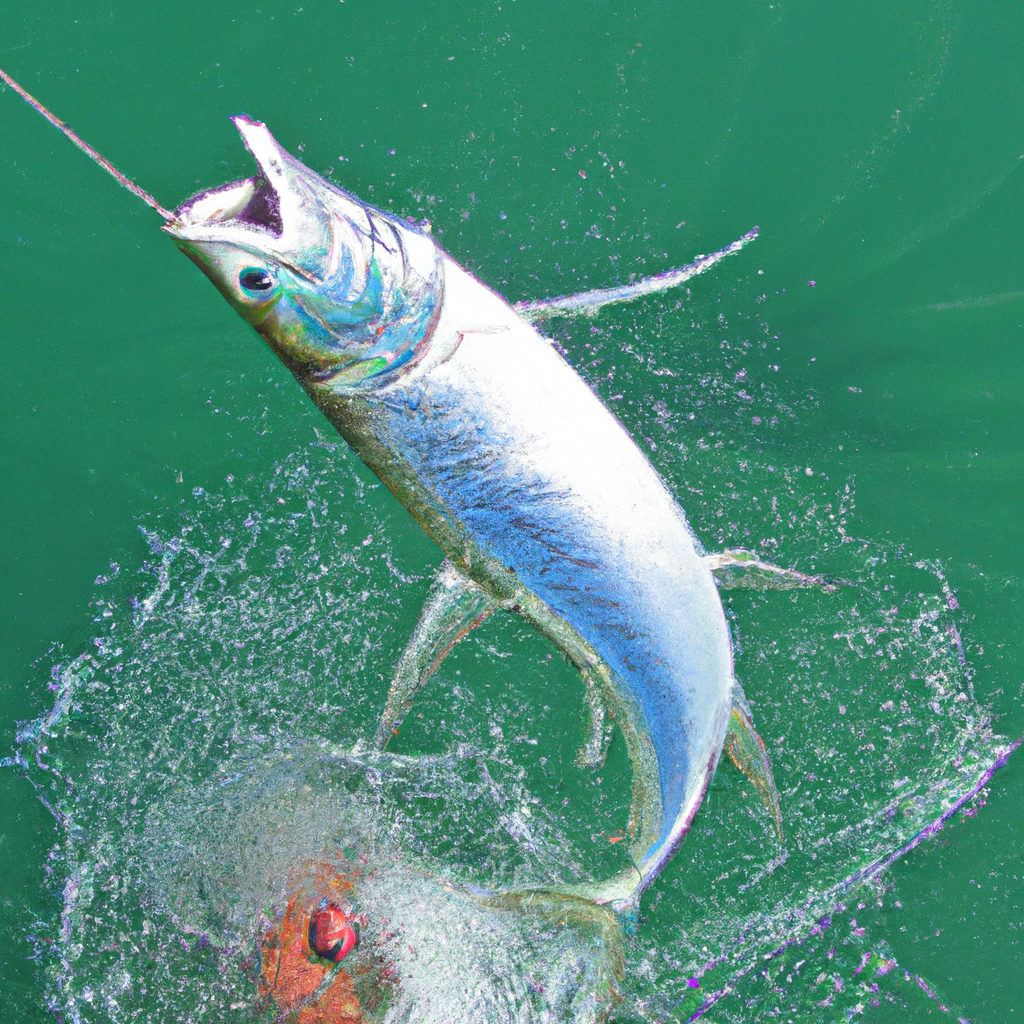Ready to reel in the thrill of a lifetime? Discover pro techniques for landing a giant tarpon in this expert guide.
From choosing the right equipment to understanding tarpon behavior, this article will equip you with the knowledge and skills needed to conquer these powerful fish.
Master the art of casting, learn fighting techniques and strategies, and perfect the art of landing and releasing a giant tarpon.
Get ready to embark on an unforgettable angling adventure like no other.
Choosing the Right Equipment

You should start by considering the time of day when choosing the right equipment for landing a giant tarpon. The early morning and late evening are the best times to target these powerful fish.
When it comes to finding the perfect bait, live mullet or crabs are highly recommended. These baits mimic the natural prey of the tarpon and increase your chances of a successful catch.
Additionally, selecting the right fishing location is crucial. Look for areas with structure such as bridges, docks, or deep channels where tarpon like to hide and feed. Pay attention to the tides as well, as tarpon tend to move with the current.
Mastering the Art of Casting

To master the art of casting, it’s important to develop a smooth and accurate technique. Improving your accuracy will greatly increase your chances of landing that giant tarpon. Here are three key casting techniques to help you improve your accuracy:
- Focus on your grip: Hold the rod with a relaxed grip, ensuring that your index finger is on top of the handle. This will give you better control and allow for a more precise cast.
- Practice your timing: Timing is crucial when casting for tarpon. To achieve greater accuracy, practice your timing by casting with a consistent rhythm and releasing the line at the right moment.
- Perfect your follow-through: A strong follow-through is essential for accuracy. After your cast, make sure to extend your arm fully and point the rod tip towards your target. This will help ensure that your fly lands exactly where you want it.
Understanding Tarpon Behavior

Understanding the overall behavior of tarpon will greatly enhance your chances of successfully landing a giant one. Tarpon are known for their remarkable migration patterns, which can span thousands of miles. During the warmer months, they migrate from their wintering grounds to spawn in coastal areas. This knowledge can help you determine the best time and location to target them.
Additionally, understanding their feeding patterns is crucial. Tarpon are opportunistic feeders and will often follow baitfish and other prey. Look for signs of feeding activity, such as rolling or jumping fish, and focus your efforts in those areas. Knowing when and where tarpon are likely to be feeding will increase your chances of enticing them to strike and ultimately landing that massive trophy.
Fighting Techniques and Strategies

Mastering the fighting techniques and employing effective strategies are essential in successfully landing a giant tarpon. When it comes to tarpon angling tactics, there are a few key techniques that can greatly increase your chances of success:
- Staying calm and focused: The adrenaline rush of hooking into a massive tarpon can be overwhelming, but it’s crucial to stay calm and focused. Maintain a steady pressure on the fish and avoid sudden movements that could cause the line to break.
- Using the right gear: Tarpon are incredibly strong and can put up a fierce fight. Make sure you have the appropriate gear, such as a sturdy rod and reel with a high line capacity. This will give you the strength and control needed to battle these powerful fish.
- Playing the fish: Tarpon have a tendency to make long, powerful runs and acrobatic leaps. Let them run when they need to, but also be ready to apply pressure when the time is right. Keep the line tight, and use your rod to steer the fish away from obstacles.
Landing and Releasing a Giant Tarpon

When you have successfully fought and tired out a giant tarpon, it is time to carefully land and release the magnificent fish. Landing a tarpon requires finesse and caution to ensure the fish’s safety and the success of tarpon conservation efforts. Here are some techniques to consider:
| Technique | Description |
|---|---|
| Use a large landing net | A sturdy, deep net with a rubber-coated mesh will provide support for the tarpon. |
| Keep the fish in water | Avoid removing the tarpon from the water to prevent stress and injury. |
| Remove the hook gently | Use a dehooking tool to safely remove the hook without harming the tarpon. |
After landing the tarpon, it is crucial to release it properly. Tarpon fishing tournaments often have strict rules and guidelines for catch and release. Follow these steps to ensure the fish’s survival:
- Revive the tarpon by holding it in the water while gently moving it back and forth to help oxygenate its gills.
- Release the tarpon by slowly moving it forward until it swims away under its own power.
- Report your catch to tarpon fishing tournaments, as this data contributes to tarpon conservation efforts.
Frequently Asked Questions
How Long Does It Typically Take to Land a Giant Tarpon?
Typically, landing a giant tarpon can take some time due to their intense fight duration. However, with the right landing strategies, you can increase your chances of successfully reeling in these majestic fish.
Are There Any Specific Tactics for Landing a Tarpon in Shallow Water?
In shallow water, tarpon landing techniques require specific tactics. You need to be aware of the depth and adjust your approach accordingly. Use shorter casts, lighter gear, and be prepared for quick, explosive runs.
What Kind of Bait Works Best for Targeting Giant Tarpon?
To hook a giant tarpon in shallow waters, the best bait is a juicy mullet or a live crab. Cast near structures like mangroves or bridges and use different fishing methods like trolling or sight casting for optimal success.
Are There Any Specific Techniques for Fighting a Tarpon That Jumps Frequently?
When a tarpon jumps frequently, you need to employ specific fighting techniques to ensure a successful landing. Understanding tarpon behavior and adjusting your rod angle and line tension are crucial for controlling the fight and keeping the fish hooked.
How Can Anglers Ensure the Safe Release of a Giant Tarpon After Landing It?
To ensure the safe release of a giant tarpon, handle it with care, keeping its well-being in mind. Use proper equipment and techniques, such as wetting your hands and using a dehooking tool, to preserve the tarpon’s health and longevity.

